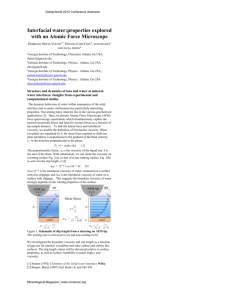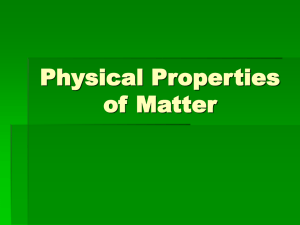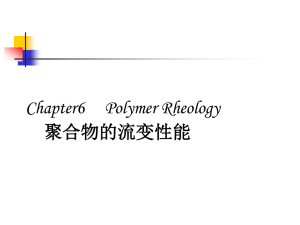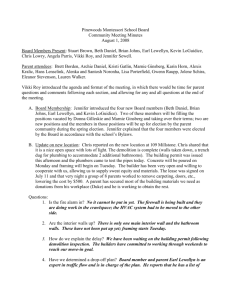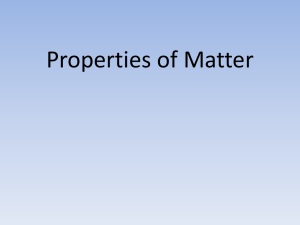PHYSICS OF GLASSES, AMORPHOUS SOLIDS AND
advertisement
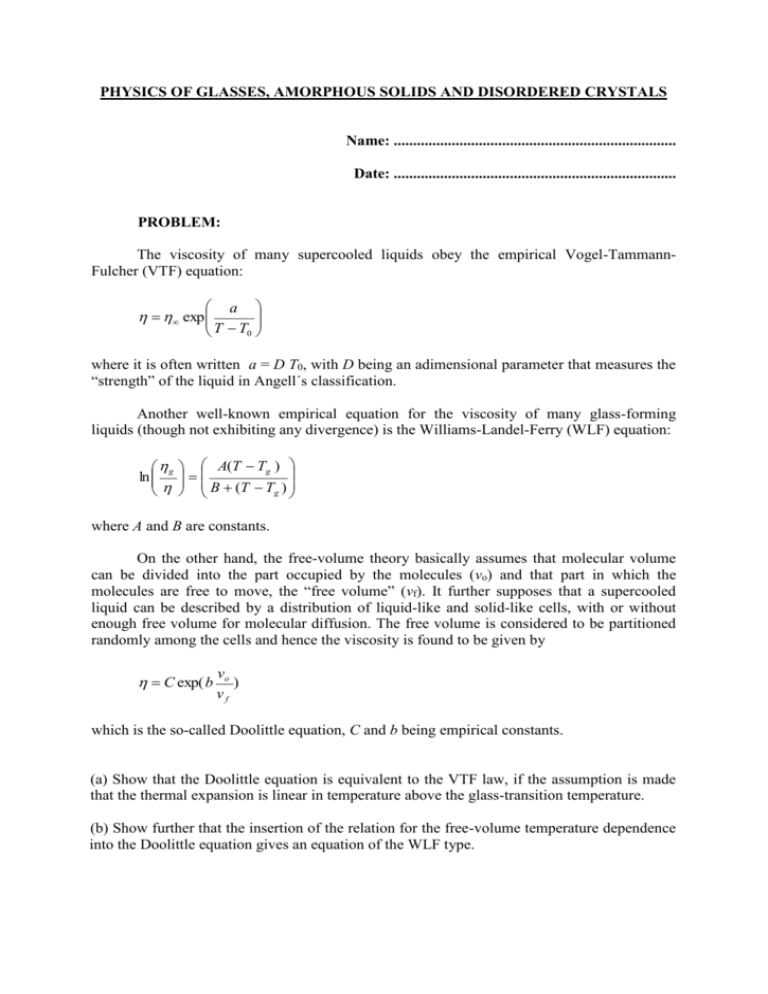
PHYSICS OF GLASSES, AMORPHOUS SOLIDS AND DISORDERED CRYSTALS Name: ......................................................................... Date: ......................................................................... PROBLEM: The viscosity of many supercooled liquids obey the empirical Vogel-TammannFulcher (VTF) equation: a T T0 exp where it is often written a = D T0, with D being an adimensional parameter that measures the “strength” of the liquid in Angell´s classification. Another well-known empirical equation for the viscosity of many glass-forming liquids (though not exhibiting any divergence) is the Williams-Landel-Ferry (WLF) equation: g ln A(T Tg ) B (T Tg ) where A and B are constants. On the other hand, the free-volume theory basically assumes that molecular volume can be divided into the part occupied by the molecules (vo) and that part in which the molecules are free to move, the “free volume” (vf). It further supposes that a supercooled liquid can be described by a distribution of liquid-like and solid-like cells, with or without enough free volume for molecular diffusion. The free volume is considered to be partitioned randomly among the cells and hence the viscosity is found to be given by C exp( b vo ) vf which is the so-called Doolittle equation, C and b being empirical constants. (a) Show that the Doolittle equation is equivalent to the VTF law, if the assumption is made that the thermal expansion is linear in temperature above the glass-transition temperature. (b) Show further that the insertion of the relation for the free-volume temperature dependence into the Doolittle equation gives an equation of the WLF type.


